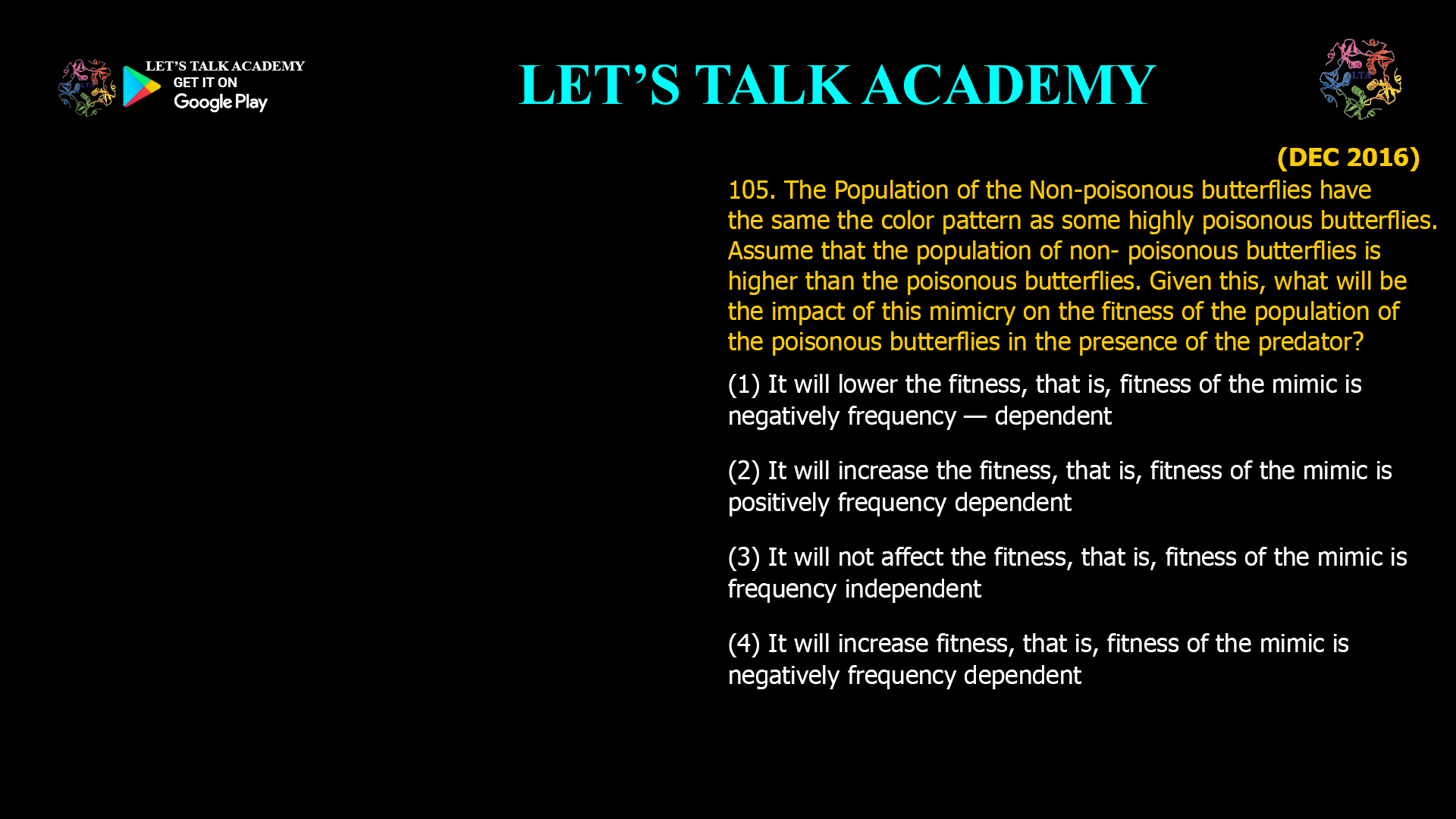- The Population of the Non-poisonous butterflies have the same the color pattern as some highly poisonous butterflies. Assume that the population of non- poisonous butterflies is higher than the poisonous butterflies. Given this, what will be the impact of this mimicry on the fitness of the population of the poisonous butterflies in the presence of the predator?
(1) It will lower the fitness, that is, fitness of the mimic is negatively frequency — dependent
(2) It will increase the fitness, that is, fitness of the mimic is positively frequency dependent
(3) It will not affect the fitness, that is, fitness of the mimic is frequency independent
(4) It will increase fitness, that is, fitness of the mimic is negatively frequency dependentWhat Happens When Non-Poisonous Mimics Outnumber Poisonous Models?
In a scenario where non-poisonous butterflies (mimics) are more numerous than poisonous butterflies (models), the dynamics of predator learning and avoidance shift dramatically:
-
Predator Experience Changes: When mimics are rare, predators are more likely to encounter and remember the unpleasant experience of eating a poisonous butterfly, leading them to avoid all butterflies with that color pattern.
-
Dilution of the Warning Signal: As mimics become more common, predators are increasingly likely to have rewarding (non-toxic) experiences when attacking butterflies with the warning coloration. This undermines the effectiveness of the warning signal.
-
Predator Behavior Shifts: Eventually, predators may start ignoring the warning coloration altogether, attacking both mimics and models more frequently.
Impact on the Fitness of Poisonous Butterflies
This shift has a negative impact on the fitness of the poisonous butterfly population:
-
Increased Predation: Poisonous butterflies lose the protective advantage of their warning coloration, as predators no longer associate it exclusively with a negative experience.
-
Lowered Fitness: The survival rate of poisonous butterflies drops, reducing their overall fitness in the presence of abundant mimics.
This relationship is a classic example of negative frequency-dependent selection in Batesian mimicry systems: as the frequency of mimics increases, the fitness of both the mimic and the model declines.
Correct Interpretation
-
Option (1): It will lower the fitness, that is, fitness of the mimic is negatively frequency-dependent.
This is the most accurate description of what happens in this scenario. The fitness of the poisonous (model) species is lowered when mimics are more common, and the effectiveness of mimicry for the non-poisonous species is negatively frequency-dependent—it is highest when mimics are rare and declines as they become more common.
Conclusion
When non-poisonous butterflies that mimic poisonous ones become more abundant than the models, the fitness of the poisonous butterfly population is reduced due to increased predation. This outcome is driven by negative frequency-dependent selection, a fundamental principle in the evolutionary dynamics of Batesian mimicry.
-




1 Comment
Kajal
October 13, 2025Option 1